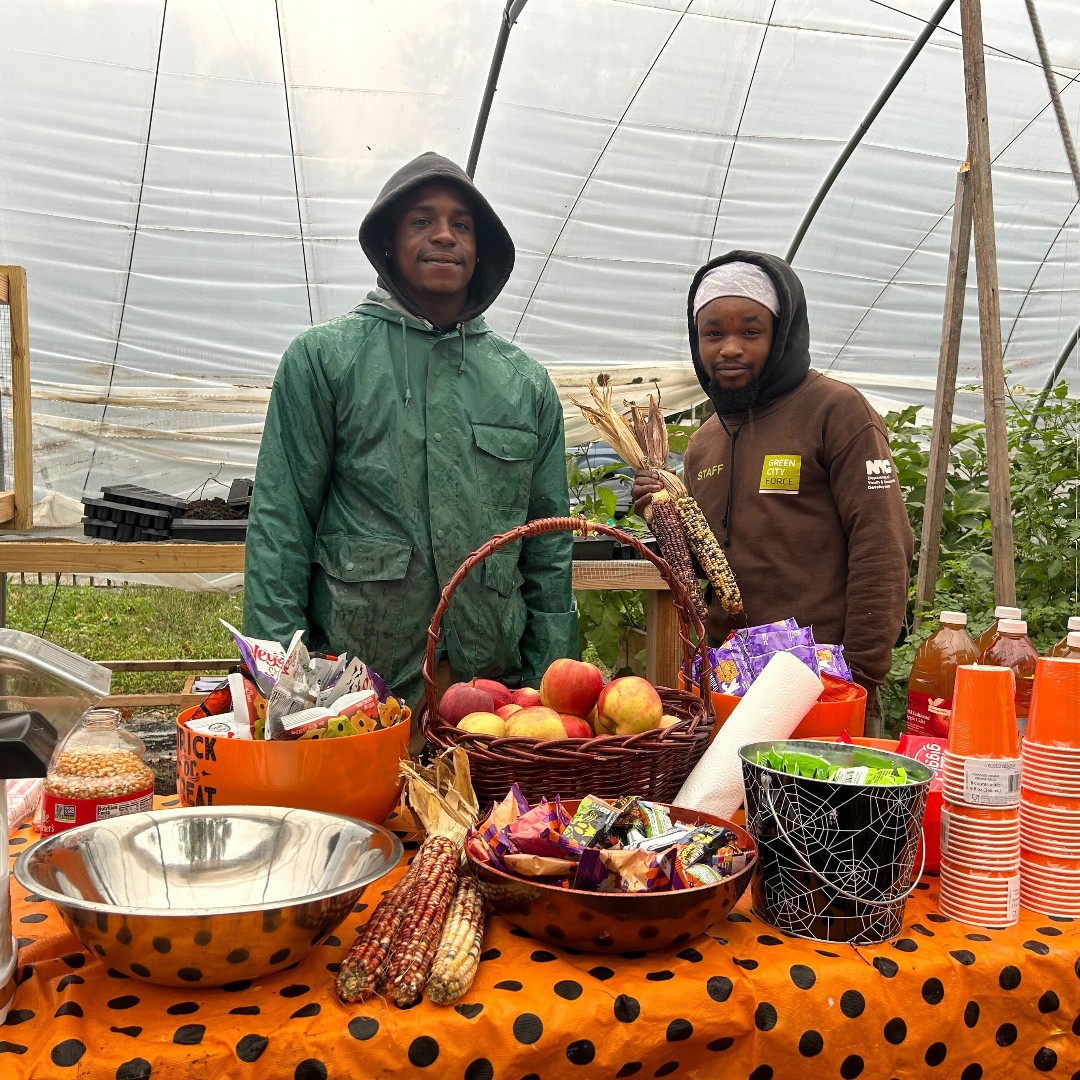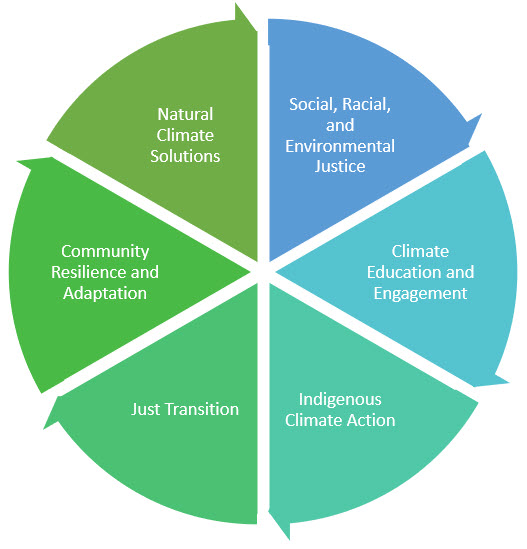Climate Justice
This article is part of the series of resources and webinars created by the Sustainable Libraries Initiative team, in collaboration with WebJunction, to support libraries in creating a more sustainable future.

an outreach of the Brooklyn Public Library (NY), via
While everyone is affected by climate change, the impacts of climate change are not evenly distributed. Climate change has a multiplier effect on societal, environmental, and economic injustices. It amplifies long-standing marginalization of various segments of our society and seems to punish those who had the least to do with causing climate change.
For example, in urban settings, researchers have found that redlining—racist banking policies toward minority neighborhoods—has created a direct link between minority neighborhoods and increased exposure to air pollution and extreme heat.[1] Historically redlined districts are on average five degrees Fahrenheit warmer than non-redlined districts.[2] In the southeastern region of the United States, we find historic Black settlements in the lowlands which are more vulnerable to rising sea levels and storm surges from increasingly severe hurricanes attributed to climate change. In every region impacted by deadly weather—wildfires, tornadoes, hurricanes, and heatwaves—economically disadvantaged communities are more likely to find themselves “surviving in place.” They have fewer funds to finance options to leave an area as severe weather moves to their location.
“Justice is the ethical, philosophical idea that people are to be treated impartially, fairly, properly, and reasonably by the law and by arbiters of the law, that laws are to ensure that no harm befalls another, and that, where harm is alleged, a remedial action is taken - both the accuser and the accused receive a morally right consequence merited by their action.”
Legal Information Institute, Cornell Law School
Introducing the concept of climate justice into our conversation about climate action is essential. Acting without recognition of the social and economic impact of our environmental choices is how we got into this mess to begin with. Taking actions that may focus primarily on environmental gains to mitigate and adapt to the effects of climate change without understanding the systemic impact on human health, livelihoods, and marginalized communities undoes any gains we may achieve.

University of California Center for Climate Justice
The Six Pillars of Climate Justice
The University of California’s Center for Climate Justice proposes six pillars for understanding climate justice:
Just Transition
This phrase relates to the transition of the economy away from fossil fuels, shifting from an extractive economy to a regenerative economy. At its core, is a call to ensure that this transition is equitably achieved. It emphasizes awareness that as we address changes in industries that are harming workers, community health and the planet, that just pathways for workers to transition to other jobs, perhaps in renewable energy and sustainable land use practices, must be available.
Social, Racial, and Environmental Justice
Perhaps the most widely recognized form of climate justice, this pillar recognizes the deep, disproportionate impacts of climate change on low-income and BIPOC communities, the people least responsible for the problem.
Indigenous Climate Action
This pillar recognizes both the wisdom of indigenous communities to understand ecosystems and how to heal them as well as the fact that many indigenous communities are disproportionately impacted by climate change due to their reliance on the natural world for their lives and livelihoods.
Community Resilience and Adaptation
As discussed in our previous article about Climate Adaptation, resilience measures a community’s capacity to recover from climate hazards such as flooding, hurricanes, and drought. This calls for a recognition that solutions applied in communities where long-standing inequitable systems put folks at a disadvantage need to be adjusted to account for those injustices. Examples of work in this area identified by the University of California’s Center for Climate Justice include food sovereignty, common property forest management, and energy democracy. They also note the importance of local communities developing their own solutions and allow them to benefit directly from local climate action.
Natural Climate Solutions
Natural climate solutions recognize the importance of a systems approach to understand the interconnectedness of the ecosystem. Examples of natural climate solutions include regenerative farming, agroforestry, permaculture, urban gardens, and forest restoration. The Center for Climate Justice explains, “A climate justice approach to natural climate solutions considers not just how the land is managed but who has access to it. It is critical that those who live on and steward the land have the autonomy and support to make decisions that generate social and ecological benefits for themselves, their communities, and the environment.”
Climate Education and Engagement
This pillar has great consequence for libraries as we are educators. Widespread education on the facts about climate change, including its causes and projected impacts, is necessary due to years of combatting climate change denial and misunderstanding around the climate crisis. Folks who better understand these issues will have a strong chance of working together in their communities to engage civically in problem solving activities, including policy making.
The urgency for climate action cannot be understated. We must keep in mind that how we do our work matters just as much as what we do and why we do it.
References
[1] https://pubs.acs.org/doi/full/10.1021/acs.estlett.1c01012
Webinars in the series
Visit each listing for recordings and handouts and use the Series Learner Guide (doc) together or with others, to take action on your learning.
Sustainability 101
Recording now available
Climate Action Planning (Part 1): An Introduction
Recording now available
Climate Action Planning (Part 2): Disaster Preparedness and Community Resilience
Recording now available
Climate Justice
Recording now available
Living Our Values Out Loud: Programs that Walk the Talk
Recording now available
Stronger Together: Collective Impact and Climate Action Programming
Recording now available
Inspired to learn more?
If you’re looking for climate justice strategies you can subscribe to the free, monthly newsletter of the Sustainable Libraries Initiative for more ideas, stories from the field, and resources to help your library and community.
